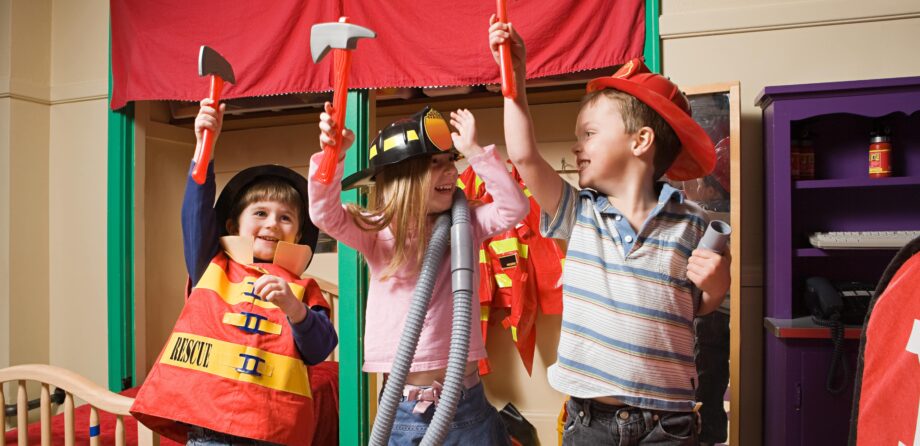
Nursery uniforms and dress codes
When setting a dress code policy for your nursery, health and safety should be at the forefront of your mind, for both your staff and the children in your care.
 As nursery owners, you should ensure your employees are aware of the appropriate attire to comfortably and safely care for the children. But looking beyond health and safety, what about the image your dress code portrays?
As nursery owners, you should ensure your employees are aware of the appropriate attire to comfortably and safely care for the children. But looking beyond health and safety, what about the image your dress code portrays?
We may think about how parents perceive staff dress codes – but how does it affect the children? The continuity of branded shirts or tabards not only acts as great advertising to parents – it can help children to settle.
“I think a formal dress code, with a nursery logo, gives the children a sense of security,” said Ellie May Woodhead, Baby Room Leader at Nightingales Private Day Nursery, “They recognise the logo and associate it with their daily routine. I work with young children (under twos) and they often point to the logo on the nursery building and then point to it on the staff polo shirts.”
Staff uniforms can also help children to prepare for school, where they will likely have to wear a uniform. Early Years Assessor Shantha Sampath said:
“Children transitioning to school can see that not just them, but their caregivers too wear uniforms. Uniforms are something not to dislike or fear. So, practitioners tend to be role models in preparing children for school uniforms.”
Diversity and flexibility
There are clearly benefits to a dress code, but do children need to see variety in how staff present themselves?
As nursery practitioners, part of your job is to help children to understand diversity. Studies show that children as young as five can express desires to have traits such as “yellow hair” and “blue eyes”.
There is an argument for allowing staff to express individuality in how they present themselves, so children can get used to seeing people looking different and therefore accept more variety.
Children can also benefit when staff are more relaxed and flexible in their attire.
Jade Healey, Owner of Home from Home Childcare, said: “The only requirement we have is that staff wear our polo tops and fleeces. Any dark trousers or knee length shorts are fine as well as any sensible shoes or even slippers.
“We offer a home from home environment, so it’s important to us that staff feel comfortable, relaxed and at home too. I think children are naturally more relaxed if the adults around them are too. It also allows staff to get ‘stuck in’ to play and interaction – more formal dress codes such as wearing skirts or shirts may limit their ability to climb over logs in the woods etc.”
 A barrier to recruitment?
A barrier to recruitment?
As well as affecting current staff, strict dress codes can also impact potential new recruits.
Nursery Nurse Elizabeth Parlett said: “One nursery I went for an interview for wanted staff to wear smart black trousers and shoes, and this was genuinely one of the reasons I turned the job down!”
NDNA’s latest Workforce Survey for England found that 24% of employers faced issues recruiting unqualified assistants, trainees, managers or apprentices, and 77% faced issues recruiting Level 3 staff. Imposing a strict dress code could present another barrier, raising the argument whether strict rules should be relaxed when recruitment in the sector is already so hard.
Religious dress
Incorporating religious dress into your dress code can be a complicated area. Citation Employment Law manager Emma McGrath suggests that if you plan on restricting employees from wearing jewellery,
“as long as this is a reasonable rule that can be justified on health and safety grounds, employers could apply this even if it meant that a Christian employee was no longer able to wear a crucifix.
Equally, a nursery could limit piercings if this could be justified on health and safety, even if this interfered with the employee’s freedom of expression.”
There was a case involving a nursery (Begum v Pedagogy Auras UKEAT/0309/13/RN) where a Muslim job applicant was asked to wear a shorter jilbab than she wished, as her preferred length of a garment was a tripping risk to other staff and children.
The Employment Appeal Tribunal held that this wasn’t indirect discrimination as it was applied to all staff, and even though it did put some Muslim women at a particular disadvantage, this was justifiable as it was proportionate means of achieving a legitimate aim, namely to ensure the health and safety of other staff and the children.
Finding a balance
Dress codes can be a balancing act between individual expression and representing a business. There is often no “right” way when it comes to how strict your guidelines are – for example, there are so many other ways you can promote diversity and individuality across the nursery outside of a dress code.
As long as you follow the legal and health and safety guidelines, the rest is down to you.
With thanks to everyone who contributed to this blog post.
- Health and Safety
Similar Articles
Top Tips for Inclusive Christmas Celebrations

Early years activity: Comparing natural objects


